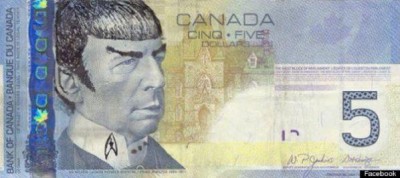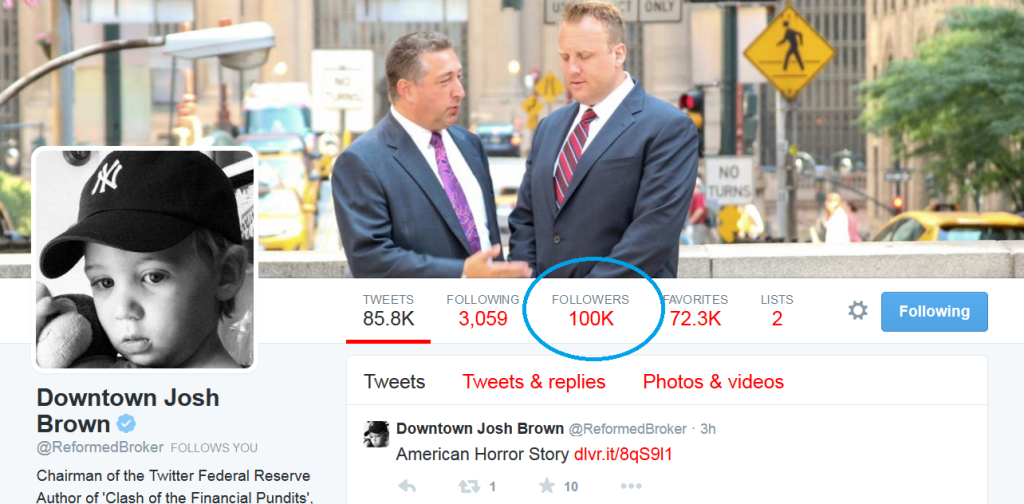The Big Picture |
- NASDAQ 5000 – Crash? Bubble? Fair Value?
- Star Trek Fans Are ‘Spocking’ Canadian $5 Bills
- The US Housing Market
- Congrats to Josh on 100k Followers!
- Please Stop Talking About Inflation Adjusted Nasdaq
- 10 Wednesday AM Reads
- Investment in the Euro Area: Why Has It Been Weak?
| NASDAQ 5000 – Crash? Bubble? Fair Value? Posted: 05 Mar 2015 02:00 AM PST
NASDAQ 5000 – Crash? Bubble? Fair Value? Almost fifteen years ago, on April 1, 2000, we wrote and published a piece entitled "Will the NASDAQ sell-off become a crash?" We have now retrieved that piece from our archives and posted it on our website.
In preparing that piece we evaluated the stock market and made a theoretical calculation in which we merged two companies, Cisco and Microsoft. We assumed that their reported earnings were accurate. We found that the two companies merged together had earnings of $10 billion and their merged theoretical market valuation amounted to $1 trillion. Our conclusion at the time was fairly straightforward. There was nothing wrong with either company. Both Cisco and Microsoft were fine, large, developing, worldwide leaders in the Technology sector. The stock price, however, was wrong. At 100 times earnings, the price of the theoretically merged company's shares was not justified by any valuation technique. The combined GDP of all countries in the world was estimated at $30 trillion.
We concluded in our piece that the NASDAQ at 5000 was setting up for a crash. The fourth page measures the value of Cisco against a list of companies (that list included Apple). 15 years ago, we forecast that NASDAQ 5000 would lose over two-thirds of its value before the crash and sell-off ran their full course. Never did we think that the result would be a loss of 80% of its value.
This week, Convergex published a piece including their discussions of NASDAQ 5000. Author Nicholas Cola titled the piece "NASDAQ 5000 – Don't Call it a Comeback" (March 3, 2015).
Here is the summary, which tells most of the story:
With the NASDAQ Composite back to the magic 5,000 level, today we look at the "heavy hitters" in the index. The companies with the top 10 weightings comprise some 32% of the entire index, led by Apple (9.9%), Microsoft (4.8%) the two flavors of Google (4.6%). So where do NASDAQ Comp valuation levels sit at 5,000, and what do you get for your money? Forward P/E multiples based on analyst expectations are 19x earnings, a noticeable premium to the S&P 500 at 17x. In return for that markup, those top 10 names in the NASDAQ offer the promise of real revenue and earnings growth. Analyst estimates for top line growth in 2015 for the top 10 names average out at 13.7% and the 3-year CAGR through 2017 is 11.2%. That translates into 9.4% earnings growth for this year and 11.7% compounded growth through 2017. The real question behind NASDAQ 5,000 Version 2.0 is simple: what price do you pay for growth stocks versus the broader index. Let's take a look at the issue now compared with conditions when our NASDAQ 5000 piece was written 15 years ago. Microsoft is now 4.8% of the index, Cisco is 2%, and Apple is approximately 10% of the index and the largest weight. The Convergex research piece provides the remaining information in detail. For information about Convergex, visit www.convergex.com. If you want to send them a reply on their commentary or obtain a copy of Nicholas Colas's March 3, 2015, piece, we suggest sending an email to Convergex at morningbriefing@convegex.com. Note: Cumberland is a user of Convergex's services and receives their research missive daily.
So what does it mean that the price/earnings ratio is no longer 100:1? It is now in the mid-teens. The stocks currently represented in the NASDAQ are still heavily focused within the Technology sector. Some of the companies, whose market prices may be high relative to past references, are supported by profits and robust estimates of future growth. What is the condition of those companies? Do they have large reserves of cash, or are they involved in heavily leveraged debt structures? Cash seems to be the answer in most cases.
What is the basic condition of the Technology industry? In the dot.com era 15 years ago, as the NASDAQ steamed toward 5000, there were many companies that had no product or earnings. They had only future prospects. Companies formed in garages and found themselves with overnight capitalizations in the billions. Technology sector fever gripped the stock market as a whole, with the Tech sector priced at nearly one-third of total market value at its peak. The price of stocks relative to America's gross domestic product (GDP) reached all-time highs, based upon trillions of dollars in market value for companies that were little more than concepts. By some estimates, the US market cap was $7 trillion in excess at the top of the tech bubble.
Is the picture the same today with the NASDAQ at 5000? We think not. Could the NASDAQ go through a correction? Yes. We have had an extended bull market of six years' duration. Corrections have been elusive but are inevitable. That includes the NASDAQ.
We wrote about the NASDAQ 5000 15 years ago as a bubble, the forerunner of a crash, and a valuation supported without earnings or momentum other than prices set by speculative fever. Now, 15 years later, the NASDAQ represents companies that have worldwide growth potential and are revealing once again the remarkable robustness of technology advancement as a business model. These companies are very American. Look at the NASDAQ list and note the nature and structure of these success stories that are rooted in the United States.
Is the NASDAQ 5000 a crash in the making? Fifteen years ago the answer was, without equivocation, yes. Today, the answer is no. It is 15 years later.
We are overweight the Technology sector in our US exchange-traded fund (ETF) managed accounts. Those ETFs contain the stocks mentioned in the Convergex report along with many others. We think the outlook for this sector's evolution is strong and strategically long-term, with higher earnings, profits, dividends, and stock prices ahead.
We put together a short video on this NASDAQ 5000 phenomenon and how it figured into the creation of our ETF separate account management structure back in 1999. You can view the video here.
David R. Kotok, Chairman and Chief Investment Officer |
| Star Trek Fans Are ‘Spocking’ Canadian $5 Bills Posted: 04 Mar 2015 04:30 PM PST I know I mentioned this earlier this morning, but really, how awesome is this:
The Toronto Sun is reporting that:
Live long and prosper . . . |
| Posted: 04 Mar 2015 01:00 PM PST
|
| Congrats to Josh on 100k Followers! Posted: 04 Mar 2015 09:00 AM PST Click thru for live Twitter feed
Congrats to my colleague and partner Josh Brown, for hitting a major milestone this week: 100,000 Twitter followers. If you are not following Josh on Twitter, you are missing some of the most insightful and hilarious comments about the workings of the financial markets in all the land. Seriously great stuff.
|
| Please Stop Talking About Inflation Adjusted Nasdaq Posted: 04 Mar 2015 07:30 AM PST The last refuge of scoundrels is their blind insistence that all data points must be adjusted for inflation. I was reminded of this earlier in the week when Nasdaq, after 15 long years, closed above the 5,000 mark. The immediate response from parts of the bearish contingency was to demand that the numbers take into account the rise in prices. There are many, many reasons why this is irrelevant to investors. Let's focus on just three: The first is technicals. When practitioners of this form of analysis look at support and resistance lines in a graph of a stock or index, they are actually delving into the world of psychology. Traders recall that when they bought stocks at a specific price, they were rewarded. That muscle memory keeps them coming back for more at those prices. This is true for stocks, exchange-traded funds and even indexes. Similarly, they remember being punished when they paid too much at specific prices. Who among hasn’t thought to ourselves, "Dear Lord, let me just get back to break-even"? That is why share supply often appears at specific prices. It is a sign of investors recalling an earlier purchase that has been painful.
|
| Posted: 04 Mar 2015 04:00 AM PST Its Wednesday, and we have only had two snowstorms so far this week, with another expected tomorrow. No worries, there is only 16 days to Spring. And, our morning train reads:
|
| Investment in the Euro Area: Why Has It Been Weak? Posted: 04 Mar 2015 02:00 AM PST
|
| You are subscribed to email updates from The Big Picture To stop receiving these emails, you may unsubscribe now. | Email delivery powered by Google |
| Google Inc., 1600 Amphitheatre Parkway, Mountain View, CA 94043, United States | |











0 comments:
Post a Comment